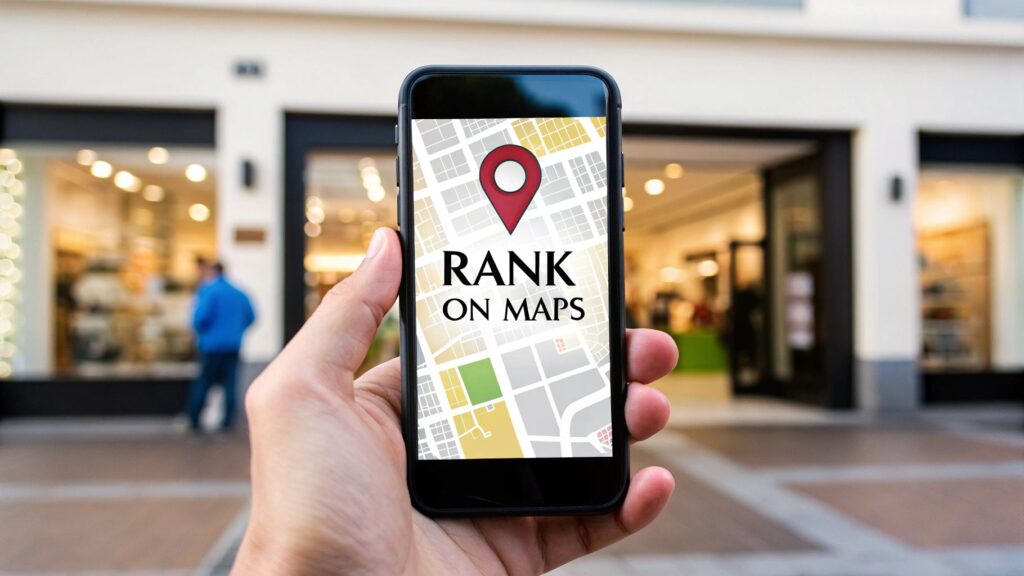
One of the hardest skills you can learn is how to sell SEO over the phone.
Phone sales, are challenging enough, let alone selling a service that likely won’t produce a return for months.
However, selling SEO over the phone is something you’ll want to master if you intend on scaling an agency outside of your local geography.
This article will help you refine your offer, outreach approach, sales process, and pitch so that you can sell new clients on a consistent basis.
We won’t cover an exact script in this article but what you’ll get are the foundational pieces needed in order to get more clients and scale your agency to the moon.
Begin At The End
Too many marketers attempt to sell a service in which they know little about. It’s true that you can sell clients with little knowledge of how to fulfill but you must at least know the steps involved.
Start at the end by first defining who your ideal client is and their pain points. You can determine this information through online research but ultimately, the best intelligence will come straight from the target audience themselves.
Talk with prospects as well as current/past clients to better understand what makes them buy in the first place. With this knowledge, craft a clear offer that inherently addresses the main objections of your audience. Working in this way will enable you to create a service offering that sells itself and make your sales process that much easier.
Further, keep your offer flexible. The more you pitch directly to prospects the more objections and needs you’ll tease out. Continue tweaking your offer indefinitely to improve conversions.
Prepare to Win
You’ve determined your offer so now it’s time to reverse engineer the sales process. Once again, start at the end.
Assume you have already made the sale before going into any sales conversation by preparing on boarding documentation.
Make sure you have the following documents to create the smoothest transition between sales call to a paying customer:
- Service proposal
- Pre-filled invoice
- On-boarding instructions
Have these items linked in a draft email to your prospect so when the time comes, you’re ready to close.
Further, don’t be like these sales reps who gloat about their ability to improvise sales conversations. Although some people may naturally be more talented at thinking on their toes, there’s no way they couldn’t also benefit from preparing.
Make sure to also do/have the following before any of your calls:
- Full research into the business’s background and existing marketing strategies
- Background research on the individual you’re talking with – position, mutual acquaintances, past work experiences, interests
- Sales script including common qualifying questions

Touch Points
Let’s define the different types of calls you could potentially have with a client before jumping into the sales process.
You may find yourself on a cold call, discovery call, or sales call. In either case, the way you treat each situation will differ.
A cold call is your initial touch point with a business. The purpose of a cold call is not to make a sale but to gather intelligence and schedule a discovery session. The aim of a cold call is to quickly determine who the decision maker is, how to get in contact with them, if they show interest in SEO services, and when is a good time to schedule a discovery call.
The next step is a discovery call. The idea behind one of these conversations is to qualify, educate, and scan for interest. You can then pitch the prospect on scheduling another call once you’ve qualified that your services will benefit them and they are a good fit.
Generally, you’ll want to reserve your final call for the sales pitch in which you re-iterate the service, process, pricing, ask for the sale, and handle any objections. Send the proposal to the prospect right before or during your call so they can have this in-front of them.
Principles of Phone Sales
The following principles apply to nearly any and all types of phone conversations.
The Art of Tonality
While on the phone, people are unable to read your body language to make snap judgments about your character. However, prospects still create an image of you and it is in their head. The image potential clients make is largely created from your tone of voice.
Of course, what you say matters as well but for the most part a large portion of human communication happens below the level of conscious awareness in physical cues and tonal patterns.
Most mediocre sales reps have the resting b***h face equivalent of vocal tone. You must resist the urge to talk in a monotone manor. Specifically with men, we tend to have downward inflecting voices that are great for displaying authority but not for building trust (you need both).
For this reason, pay special attention to what emotions your voice is communicating at any given moment in a conversation.
What is Rapport?
Most people are confused on what rapport means. It’s often touted in the sales community to, “build rapport in the first 30 seconds!” Although, the initial stages of a conversation will significantly impact a prospect’s mental image of you, this old adage doesn’t completely hit the mark.
Instead, look at rapport as something you are constantly building and maintaining. From the moment you open your mouth to the day you end a relationship with a client, you’re building rapport.
Secondly, rapport isn’t necessarily about the things you have in common or the jokes you tell. Rapport can be built by conveying the following three things to the prospect (mostly through tonality)
(1) I’m sharp as a tack
(2) I an expert in my field
(3) I’m just like you – I care
Make sure the prospect can hear the previous three qualities in the tone of your voice.
Keep Your Powder Dry
Always pitch the client while giving the lowest amount of information. Keep your best sales points for last so you can continually add value to the offer throughout the conversation. The more value you stack over the course of the conversation the more perceived value the prospect has of your services.
Loop & Resell
You’ll likely get an objection on your first attempt to close. This shouldn’t be something that catches you off guard. Expect and surface objections as soon as you can so you can address them.
In order to handle an objection you’ll want to look at it as a yellow light rather than a red light.
First, take a step back and re-iterate/sympathize with their concern. Not only will this build trust with the individual but it will afford you some extra time to come up with a response.
In general, you can easily redirect the person’s focus by asking a question in response.
You: “Hey Mike, I get it, it’s a big sum of money and something you got to mull over for a bit but let me ask you this, how would you feel if I could save you $3000 on this?”
Prospect: “what, really!? How?
You: “Yeah, I think you’re really open minded about improving your business and that this service will really help you out so let’s say I shave off $500 from the management. $500 for 6 months is $3k, how’s that sound?”
*Price your services higher than you expect just so you can give this discount in the first place.
Prospect: “well, that sounds great, I just don’t give money to people I’ve never met before?
You: “Of course, you barely even know me! Hell, I bet you even forgot my name by now (jokingly) so let me re-introduce myself…”
You’d then resell your services but this time you center the pitch around their specific objection. In the above case, you’d talk about your personal/company “mission statement” and what you stand for to give him a better sense of you and your passion.
What Most Sales People Forget
No matter how good you are at sales you won’t win them all. There are just some businesses that are not ready to buy; some people are more susceptible to persuasion than others.
However, most people treat missed sales as a one time deal. They get off the phone after pushing against objections for 40 minutes and they mark the client off as a lost cause. The sale is not lost just because you didn’t sell on the initial sales process.
Make sure to manage all past leads using CRM software so that you can stay in touch and continue adding value. Do this over a period of 1-2 years and you’ll start to get SEO clients that you thought were lost months previously!
Is Your Business Ranking in Google Maps?
Turn Google Maps into a Lead Engine w/ Clicks Geek’s AI-powered local SEO. 3,000+ clients served. Our proprietary, fully done-for-you Maps SEO system handles everything—keyword targeting, local optimization, content, reviews, and ranking strategy—automatically.







